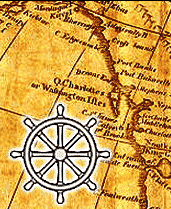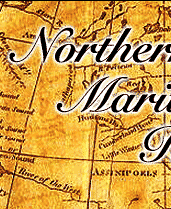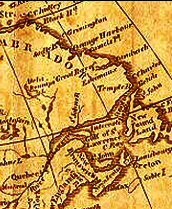Return to Northern Maritime Research
Tips for Using Northern Shipwrecks Database CD |
| |
| | The Northern Shipwrecks Database CD contains more than 141,000 records of shipwrecks. Each record has over 40 data fields for the potential of more than 4 million pieces of data. While the amount of information depends on the source document and not all data fields may be used, in many cases, data fields may contain several pieces of information (and new information is continually be added as new source documents are reviewed). This web site lists some tips to assist users in searching for shipwreck data on Northern Shipwrecks Database (latest version) CD. New tips will be added as users ask more questions. If you have a problem in using, or suggestion for improving, the next Version, please mail your question or suggestion to Northern Maritime Research. |
| | Q. How accurate are the coordinates provided? |
| | A. The accuracy depends on the source reference. Some references provide complete lat/longs down to the seconds while others only provide a geographic site. For example, "1.2 miles NNE. of Montauk Point". In these cases, the approximate latitude and longitude have been determined and logged for search purposes. Quoted coordinates are represented by numbers followed with "." (period), or 6 numbers for a latitude and 7 numbers for a longitude. For example, 410759 (41 = degrees, 07 = minutes, 59 = seconds) and longitude 0714734 (071 = degrees). Each wreck record provides a list of references. |
| | | |
| | Other Tips: |
| | |
| | 1. Installing the latest Version CD |
| | a. Place CD in drive
b. On Desktop screen, click `My Computer'
c. Click CD drive option
d. Click `SETUP' application & follow instructions (installation will send Shortcut to Desktop screen; for next use just place CD in drive & click Shortcut). Enjoy!
|
| | 2. Selecting a Global Quadrant (Map Screen) |
| | a. Select specific Global Quadrant for regional information
b. Select `All' when searching for building, owners or registry information, etc., as vessels built, owned or registered locally may have been lost anywhere in the world
|
| | 3. Searching by Vessel Name |
| | a. Try only first 4 or 5 letters for first search
b. Try variations of spelling
c. Try `Advanced' search to locate wreck if only partial or last name known
d. Follow-up with a `Date' search for wrecks or weather on date of loss
|
| | 4. Searching by Date of Loss |
| | a. Try full date for first search (YYYY.MM.DD)
b. If unsuccessful, try search by year & month (YYYY.MM)
c. Try `Advanced' search to locate wrecks loss on specific date (for all years)
|
| | Did I miss something? Mail your question or suggestion to Northern Maritime Research.
© 2025 Northern Maritime Research
|








